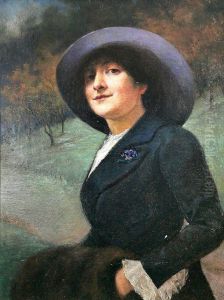Wiktor Mazurowski Paintings
Wiktor Mazurowski was a Polish artist born on October 9, 1897, in Warsaw, Poland. His artistic journey began in his early years, as he demonstrated a keen interest in drawing and painting. Mazurowski's initial education in the arts took place in Warsaw, but the outbreak of World War I interrupted his studies. Despite the challenges posed by the war, he continued to foster his artistic talents.
After the war, Mazurowski furthered his education at the Academy of Fine Arts in Warsaw, where he studied under prominent Polish painters of the time. His style was influenced by various art movements, including Impressionism and the Polish form of Symbolism. He was particularly known for his landscape paintings, which often captured the beauty of the Polish countryside, as well as urban scenes of Warsaw.
Throughout the interwar period, Mazurowski's work gained recognition in Poland, and he participated in several exhibitions. His paintings were appreciated for their vibrant use of color and dynamic compositions. Unfortunately, World War II brought significant hardships to Mazurowski, as it did to many artists in Europe. During the war, many of his works were destroyed, and he faced the challenges of living and working under occupation.
After the war, Mazurowski continued to paint and exhibit his work. He also took part in the reconstruction of cultural life in Poland. During the post-war period, his paintings reflected a sense of hope and the rebuilding of the nation. He remained an active member of the artistic community until his death on January 30, 1975, in Warsaw.
Throughout his career, Wiktor Mazurowski remained committed to his artistic vision, leaving behind a legacy of paintings that are cherished for their lyrical quality and emotive power. His contributions to Polish art are remembered and celebrated, and his works are held in various art collections in Poland and abroad.
